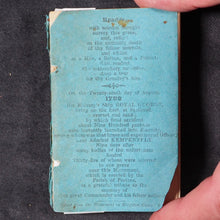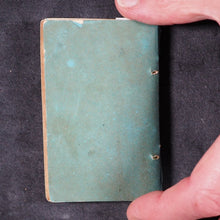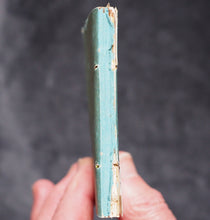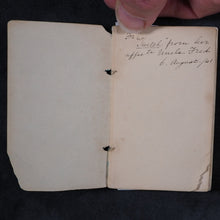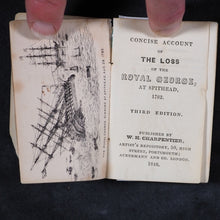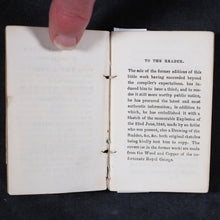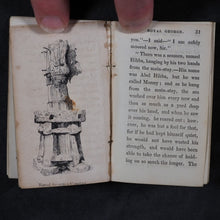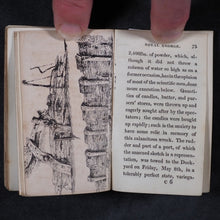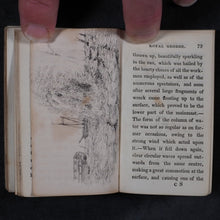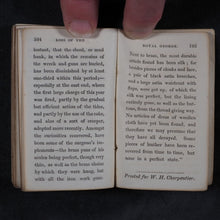
Concise account of the loss of the Royal George at Spithead, 1782 Charpentier, W. H. R. Ackerman. Portsmouth and London. 1840. Third edition. 105 printed pages. 5 engraved plates. Copy of Kingston Church Monument inscription on front wrapper. All edges gilt. Contemporary ink inscription on front free endpaper, dated 1841. 2.2 x 3.3". Original blue wrappers - and highly unusual, as such - normally bound in recovered timber (spine and front cover torn with minimal loss; edges nibbled; some spots and age-toned areas). Different publication from True Stories of H.H.Ship Royal George. The Royal George was a ship of the line of the Royal Navy. A first-rate with a 100 guns on three decks, she was the largest warship in the world at her launch in February 1756 and her construction at Woolwich Dockyard had taken ten years.She sank on 29 August 1782 whilst anchored at Spithead just off Portsmouth. The ship was intentionally rolled so that maintenance could be performed on the hull, but the roll became unstable and out of control; the ship took on water and sank. More than 800 lives were lost, making it one of the most fatal maritime disasters in British territorial waters. In 1839 Charles Pasley of the Royal Engineers commenced operations to break up the wreck using barrels of gunpowder. Pasley's team recovered more guns and other items between 1839 & 1842. In 1840, they destroyed the remaining structure of the wreck in an explosion, which shattered windows several miles away in Portsmouth & Gosport (a full account can be found at the site " The stories they Tell " ). Recovered materials were used to make a variety of souvenirs in the 1850s,and timber from the ship was used to make the billiard table by Thurston & Co. for the North Wing of Burghley House. A curious souvenir of one of the worst disasters in British Maritime History. Not in Bondy, nor Spielmann, nor Welsh. WorldCat locates only 3 copies worldwide (National Maritime Museum is only UK holding). 188 firsts2024










